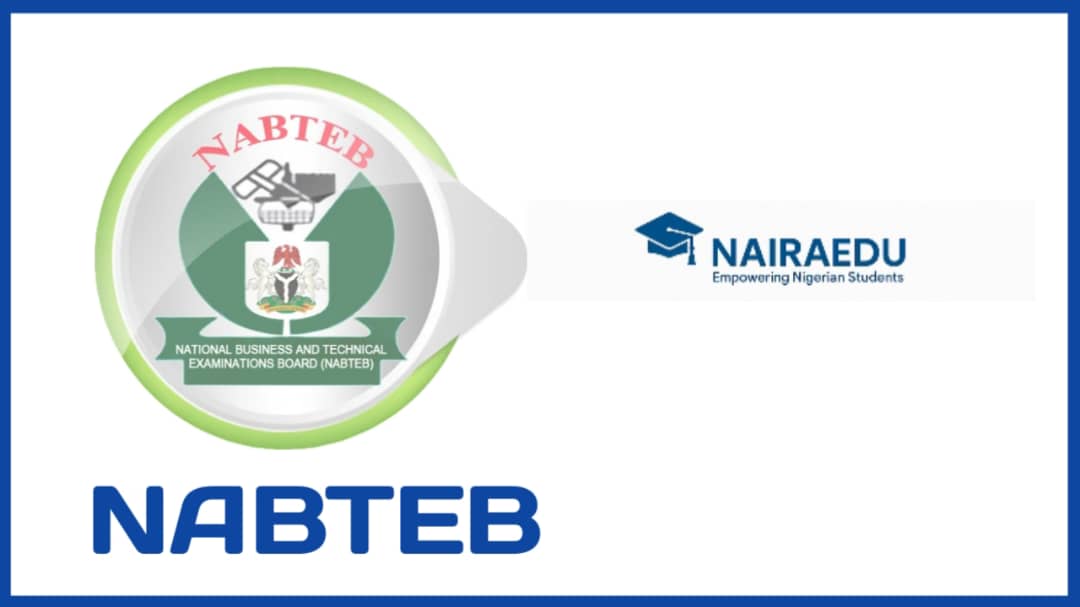NABTEB 2025 Carpentry And Joinery Questions And Answers
INSTRUCTIONS: ANSWER FIVE QUESTIONS ONLY.
(1a)
Conversion of timber is the process of cutting raw logs into usable sizes and shapes such as planks, beams, or boards. This involves sawing, seasoning, and sometimes shaping the wood to prepare it for construction or manufacturing purposes.
(1b)
It is necessary to convert logs before use because raw logs are bulky, uneven, and contain moisture that can cause shrinkage or warping. Conversion helps in removing unusable parts like bark and defects, reducing the size for easier handling, and preparing the timber to meet structural and aesthetic requirements of the intended use.
(1c)
(Draw the diagram)

(i) Tangential Conversion: This process involves cutting the log tangentially to the growth rings. It produces wide boards with a distinct grain pattern but may be more prone to warping.
(ii) Radial Conversion: In this method, the log is cut along the radius, from the center outward. It yields boards with uniform grain and greater dimensional stability.
(iii) Quarter Conversion: The log is first quartered and then cut at right angles to the growth rings. This produces timber with excellent grain quality and stability, often used for high-grade applications.
===========================
(2a)
(IN A TABULAR FORM)

(2b)
(i) Colour: This refers to the natural appearance or shade of the timber, which varies between species. It can range from pale yellow to deep brown and may darken with age or exposure to air and light.
(ii) Grain: Grain describes the direction, pattern, and arrangement of wood fibers. It can be straight, wavy, spiral, or interlocked, and it greatly influences the strength and appearance of the timber.
(iii) Texture: Texture refers to the relative size and arrangement of the wood’s structural elements, such as pores and fibers. Timber can have a fine, medium, or coarse texture depending on the species and growth conditions.
(iv) Figure: Figure is the decorative pattern seen on the surface of timber, created by the grain, texture, and natural features like knots or growth rings. It affects the aesthetic appeal, especially in furniture and paneling.
===========================
(3a)
To prepare a piece of timber to width and thickness, begin by inspecting it for defects and ensuring it’s roughly flat and straight. Using a planer or jointer, flatten one face and then square one edge to it. Next, pass the opposite face through a thicknesser to achieve the desired thickness, ensuring both faces are parallel. Finally, rip the timber to width using a table saw or circular saw, referencing the jointed edge for accuracy, and finish with a pass over the planer or edge sander for a clean, precise width.
(3b)
(i) Inspection tools: Visual check and measuring tools like a ruler or tape measure are used to examine the timber for warps, knots, and cracks.
(ii) Surface planer (jointer): Used to flatten one face of the timber, creating a true reference surface.
(iii) Edge planer (jointer): Used to square one edge to the previously planed face, ensuring a 90-degree angle.
(iv) Thicknesser (planer/thicknesser machine): Used to plane the opposite face parallel to the flat face, bringing the timber to the desired thickness.
(v) Table saw or circular saw: Used to rip the timber to the required width, referencing the jointed edge for straightness.
(vi) Edge planer or edge sander: Used to smooth and true the sawn edge, ensuring final precision in width.
===========================
RELATED POST
NABTEB 2025 Civic Education Questions And Answers
NABTEB Literature 2025 Questions And Answers Expo
NABTEB General Metal Work 2025 Questions And Answers
(4a)
An adhesive is a substance used to bond two surfaces together by forming a strong and durable attachment between them. It works through mechanical interlocking or chemical bonding, and is commonly used in woodworking, construction, and manufacturing.
(4b)
(i) Animal glues: Animal glues are natural adhesives made from collagen extracted from animal parts such as hides, bones, or hooves. They are traditionally used in woodworking and bookbinding. These glues are water-soluble, set when cooled, and can be reactivated with heat and moisture. However, they are not waterproof and are sensitive to humidity.
(ii) Casein glue: Casein glue is made from casein, a protein found in milk, combined with an alkali such as lime or sodium hydroxide. It forms a strong bond and has good resistance to water and aging, making it useful in woodworking and furniture making. However, it has a limited shelf life and must be used soon after mixing.
(4c)
(i) Woodworking: Adhesives are used to join pieces of wood in furniture making, cabinetry, and carpentry, providing strong and seamless joints without the need for mechanical fasteners.
(ii) Paper and packaging: Adhesives bond paper products in bookbinding, label production, and the assembly of cartons and packaging materials, ensuring durability and neatness.
(iii) Construction: Adhesives are used to fix tiles, floor coverings, and wall panels, offering strong, permanent bonds and reducing the need for nails or screws.
===========================
(6i)
Given:
Wet weight (Ww) = 50g
Oven-dry weight (Od) = 30g
Moisture Content (M.C.):
M.C. = Ww – Od
M.C. = 50g – 30g
M.C. = 20g
(6ii)
Percentage Moisture Content (P.M.C.):
P.M.C. = (M.C. ÷ Od) × 100
P.M.C. = (20g ÷ 30g) × 100
P.M.C. = 0.6667 × 100
P.M.C. = 66.67%
===========================
(7i)
Felling of trees: Felling of trees is the process of cutting down trees, usually as part of timber harvesting. It involves selecting mature or designated trees and using tools like chainsaws or axes to bring them down safely. Proper felling considers the tree’s lean, wind direction, and surrounding hazards to ensure controlled and safe falling.
(7ii)
Cutting list: A cutting list is a detailed document used in woodworking and construction that outlines the sizes, quantities, and types of materials required for a project. It helps in planning, reducing waste, and ensuring all components are accurately prepared before assembly.
(7iii)
Form work: Form work refers to temporary or permanent molds used to shape and support wet concrete until it hardens and gains enough strength to support itself. It is essential in concrete construction for creating structures like beams, columns, and slabs with the desired dimensions and finish.
===========================
COMPLETED

Mr. Femi is an education blogger who simplifies exam updates and study tips for Nigerian students. His goal is to make learning smart, easy, and rewarding.


1 thought on “NABTEB 2025 Carpentry And Joinery Questions And Answers”